Earlier in the year, we had the good fortune of visiting VSCO’s beautiful offices in Oakland. Massive ceilings coupled with large windows made for an impressive display for one of the creative tech world’s most respected companies. Co-Founder and CEO Joel Flory had mentioned his intentions of coming to Hong Kong. He was set to arrive on a Monday morning ahead of several other talks including Rise Conference.
Late Friday evening before his arrival, we received an email from Joel. He suggested inviting a few people down to a local coffee shop and holding an impromptu gathering.
It was the unintended and hurried beginnings of MAEKAN Sessions.
As an aside, Hong Kong possesses a population density of 6,690 people per square kilometer. The real estate situation poses many unique challenges.
We started thinking about three immediate problems. First was the difficulty in securing a space for something off the cuff and immediately recognized the need to have an actual space. We were super lucky to secure a venue by Sunday thanks to Mara and Kee Club. Secondly, how could we best structure and utilize this opportunity to have Joel provide some valuable insights into the creative community of Hong Kong. Knowing the limitations locally, we wanted to find a touch point to begin. It had to be community. Thirdly, it came the need to invite people. We had less than 24 hours to put the word out. No lie, there was a sense of panic.
In between working with Thanh of VSCO out in New York and navigating the design process, we were ready to go at 11 am. The event was literally four hours away. Despite sending out emails for an event only hours away, at 3 pm on a Monday, we managed to pack the Kee Club with an enthusiastic crowd of 45 odd people.
We had never intended to put together an event for MAEKAN so early, but it was an opportunity that was so intrinsically tied to what we represent. It provided a very rare chance to get up close and intimate with somebody who has successfully proven that you can maintain creative integrity and vision to achieve influence and success.
VSCO started off as a professional tool for photographers. It enabled them to simplify their workflow. Since then, they’ve become a full-on platform which has empowered creatives globally in unexpected places. Any lessons learned by Joel and the team have been open knowledge. Joel has always mentioned that for VSCO to win, means have others around them win too. The level of honesty and interest in seeing people succeed was evident.
Alex and I have always known sneakers and footwear. Doing the event felt like a Quickstrike drop. It was a sense of time and place that was very real. We had requests to livestream the event but unfortunately the limitations of Facebook Live and the venue (it was dark) prevented us from sharing this one. But there were so many takeaways to run with and apply for the next iteration of MAEKAN Sessions.
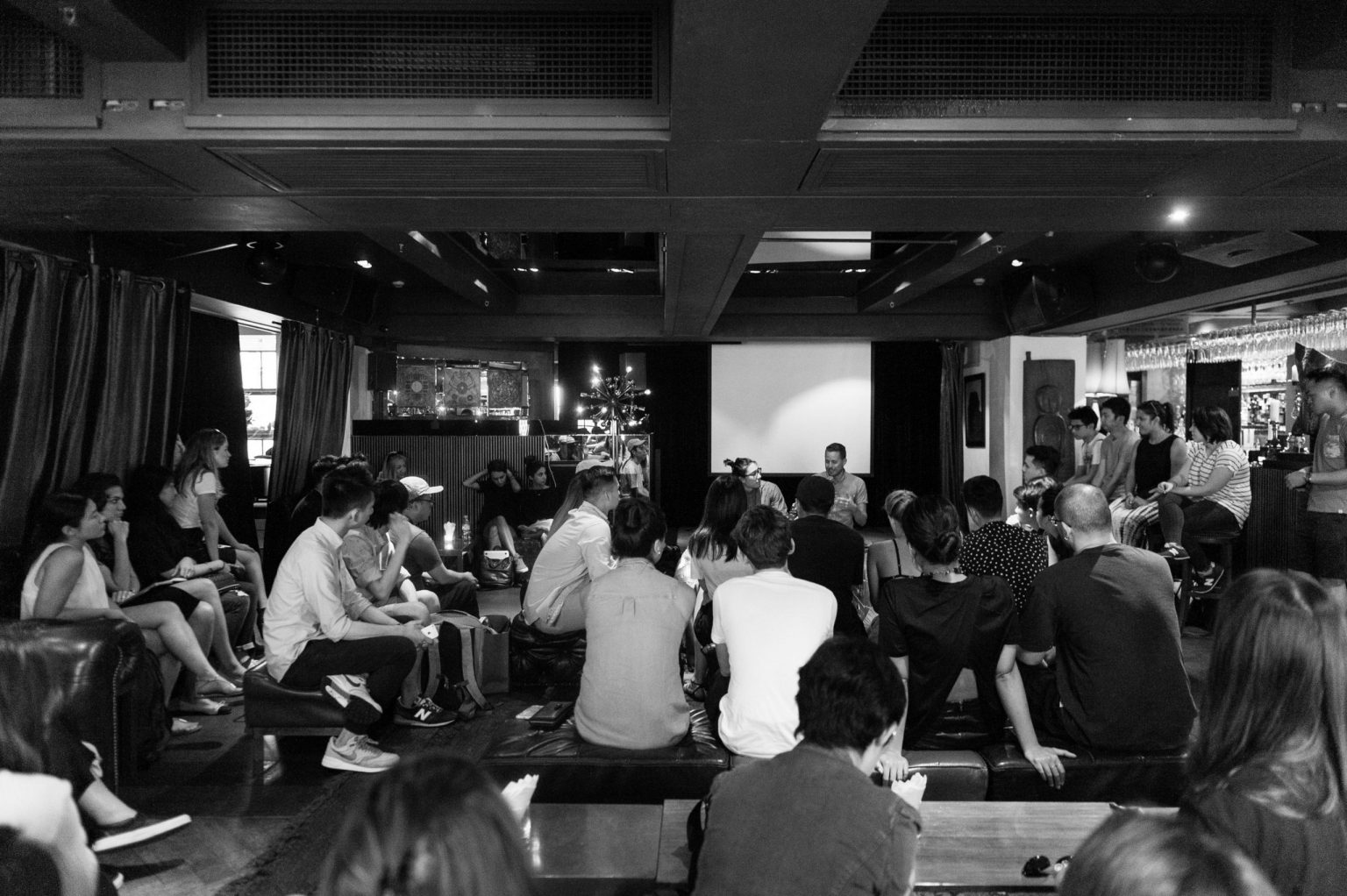
A full house on short notice at Kee Club.
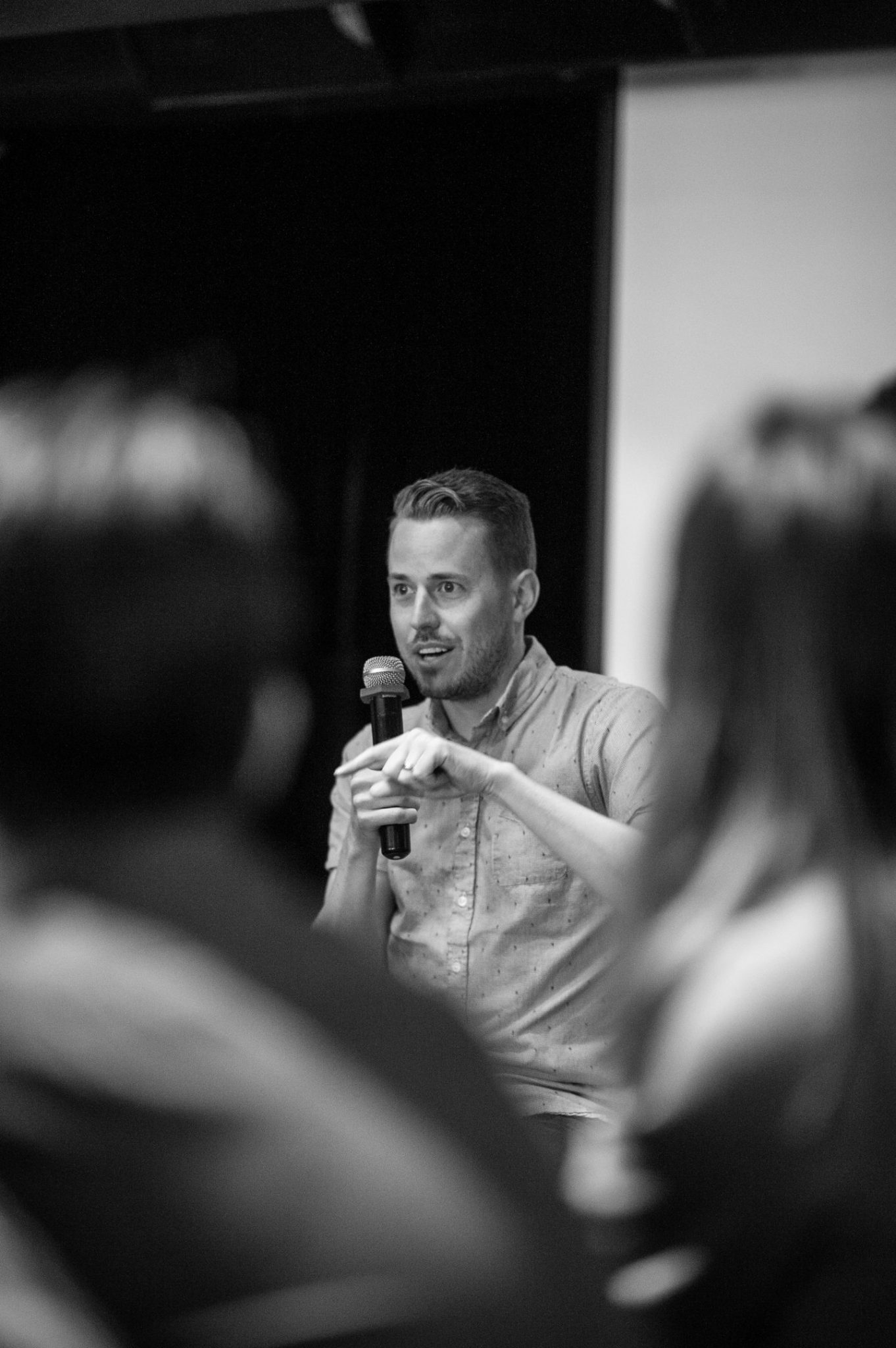
Joel speaks about the early days of building VSCO and the visions shared by him and the founding team.

A shot of Victoria Harbour.
Eugene Kan (EK): Hey Joel, let’s start by talking about your background before VSCO.
A little backstory, I was a photographer for ten years. Co-founder Greg was an Art Director for 15 years. The premise behind VSCO was we all had different jobs. We kicked around a ‘What if? What’s wrong with the industry.’ As a photographer and Greg as a designer, companies knew the tools we wanted like Adobe. But they could care less about us as people. It’s gotten better through social media. Previously it was more about photographers and designers. It wasn’t about expression. Nowadays people don’t classify themselves as an art director or a photographer unless that’s their profession.
How do you think that space has changed over the last few years? This “full-stack” creative.
Early on it was very costly because of all the tools you needed. With the rise of the mobile phone, it’s changed. In 2011, we had a workshop and made $60,000, and that was our seed money. From there we thought we were going to start doing WordPress templates. We were going to turn into a WordPress competitor. But really VSCO Film started when Zach, one of the five original guys, said he had a way to save me time while editing. He could emulate the look of film and do it more accurately than it had ever been done before. We launched, and it really took off. We set off as a professional desktop tool. As the mobile phone switched from the iPhone 4 to 4S. We realized that photography through the mobile device was going to be that game changer.
If you look back on the quintessential VSCO user, who were they?
The first VSCO Film user was me. You could think of a guy wearing plaid out of the Pacific Northwest. [laughs]
Basically like somebody who walked out of a Patagonia ad. [laughs]
It was just who I knew. The beauty is that when it gets into the hands of the right people, they make what they want out of it. The birth of VSCO was predominately the US but spread globally. 80% outside the US. 77% female and 73% under the age of 24.
Now we have two individuals. The persona of Ta-ku, who’s doing a bit of everything. Music, photography, travel. That represents a more professional level.
Second is a woman by the name Izzy (Rael). She’s 17. She’s from New York. She has a food blog. She’s one of our Artist Initiative recipients. It’s kind of that young woman who’s figuring out her voice.
How important is it to set out and know who your product is for?
Knowing the problem you’re trying to solve is key. Before we started VSCO, I had three or four ideas. Good business ideas. One or two of them would have made us more money for sure out of the gate. But somebody told us we have to find something we love and we’re passionate about. It’s not always going to be easy. When it’s tough, you’re going to want to love it and not just be a good business. Greg often says ‘the best business decision doesn’t always involve business.’ VSCO is a lot about our vision, listening to users, and shaping around that.
Was there ever a point in time where you had to do VSCO on the side?
In 2011 I shot 53 weddings. Greg was an art director an agency in New York. In 2012 I shot 32 weddings. Greg was still an art director half of the year.

Joel outlines the bifurcation of VSCO from a platform for professionals into younger female users and art-centric enthusiasts.
One of the reasons I bring this up is that in Hong Kong, there’s a lot of pressure to be profitable from the start or as soon as possible. These things are looming over your head. It’s helping make people understand there are times it will be difficult, but you’re providing yourself the opportunity to work on what you love.
That’s what’s changed and how resourceful this demographic is. There are ways to not quit your day job and fund what you want to do. I never looked back and wished I had waited longer to make the jump. Or waited longer to follow my passion. It’s always I wish I had done it sooner. That change and challenge, the first time you do it, it’s very scary and exhilarating.
One thing you mentioned that the demographic has changed. Does it matter when it changes?
The initial premise for why we exist is to celebrate humanist. We give them tools to express themselves. We want to redefine the way people Create, Discover and Connect. On the “This is VSCO” campaigns, there was Ta-ku, but also Lilli (Eve Hymowitz) doesn’t fit the quintessential VSCO user. They’re not extremely popular, and it’s about documenting life on the selfie angle. There was a lot of flak. Not everybody’s creative journey is about perfection and making a living through it. For her, she says ‘I’m just figuring it out.’ We wanted to make VSCO more inviting. Early on it was a museum. It was pressure to only post your best. Now people try new things and express themselves.
Do you think there’s fatigue with people’s perfect social media lives? VSCO was the upper echelon of that.
We’ve seen a huge growth of the youth. With Instagram, it’s typically only 1-2 posts a week, and a lot being deleted. People look at VSCO as somewhere they showcase who they are. The goal on the connecting side is not that everybody’s community needs to be huge and mass. There may be smaller subsets that people want to share and engage with.
How does meeting online facilitate a community where you don’t need to meet people together.
My mom was an immigrant from Germany. She told me I had to travel to see how others were living. Two of the top 10 cities on VSCO are from Saudi Arabia. As I start to see the content, I would never be exposed to the youth of Saudi Arabia. To me, that is exciting. Not sure if you read the post in the Washington Post about how the youth isn’t hanging out with each other anymore. Even if they live four doors down, it’s just through texting. A dad says the kids aren’t playing; they’re just staying in. For Greg and I, we’re not technical. If you ask my team what I’m good at it’s about bringing the right people and finding them for this, this and this. Some of it happens serendipitously.
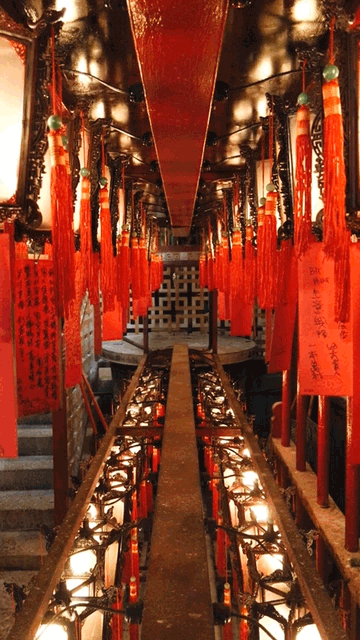
A shot of the interior of a temple in Hong Kong.

Hong Kong’s vertically-inclined housing units offer a sense of symmetry.
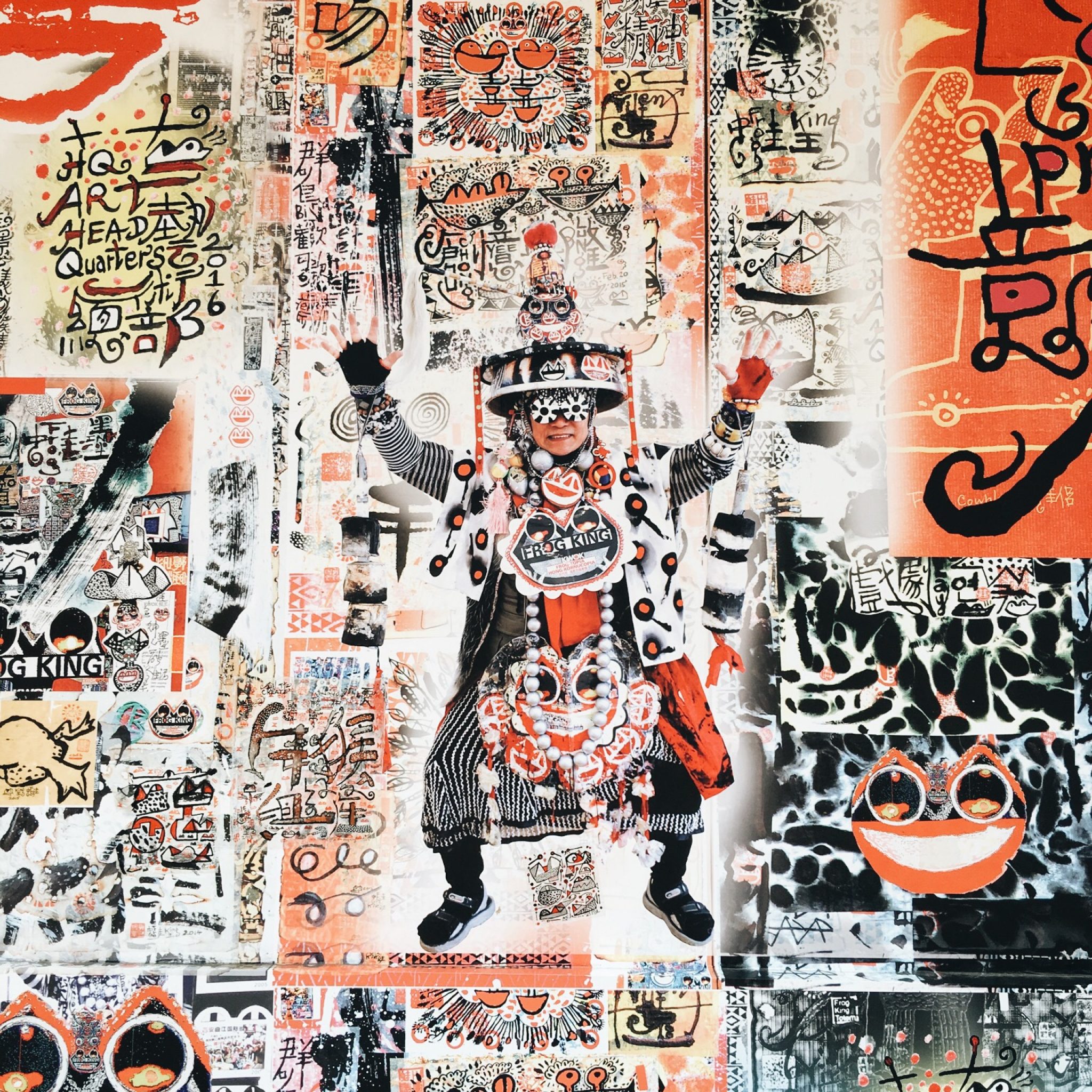
Wheatpaste street art. While graffiti is limited in Hong Kong, there’s an abundance of wheatpaste flyers and posters.

Alleys provide an interesting portal into Hong Kong life.
Now that you’re known globally, how do you aim to align people with VSCO Connect?
This is something we’re doing a lot. We’re piloting a program that we partnered with Apple. We launched VSCO Academy; it’s an original series about learning how to take photos. We’re based in New York, Oakland, and New York. We’re a global community that’s 80% outside of the US. Ultimately it’s about creating the platform and tools that are free to use so that anybody everywhere can use what they need.
What do you see as a healthy community?
We tend to look at engagement. If you’re a community, you’re creating. Some 70% of people are creating original content on VSCO. Other platforms are very passive. People go and consume. Communication is a key part of a community. That’s something 100% lacking right now. All the VSCO community’s communication takes place on Instagram, Facebook, and Snapchat. I also think the community is a sense of change for the good and evolution. Look at any community that’s growing; it’s one that’s challenging people and pushing the boundaries.
If you saw a drop in engagement, how would you assess that?
It’s tough. As far as the measuring. There’s a lot we do. It’s from the time spent in the app, to time spent editing to consuming, and the amount of images published to a profile. It’s a look at how many people are doing all of that. Regarding changes or what we’d do differently, people are spending more time in fewer apps. People say advertising is dead. Well, it’s dead for 99% of people that aren’t Facebook or Google. We’re careful with metrics. We always say we’re not data driven, but data informed. Sometimes you ask why. Is it because people are going out and shooting more and they’re not on their device all day long? In turn is that a bad thing? If they’re engaged in other ways, are we still accomplishing what we want? Most social networks have this shelf life that has this level of fatigue.
Either it gets too difficult to maintain your feed to a curated level or the pressure of likes and comments. There was a recent article in VentureBeat that speaks about that fatigue. People are stressed out from a post. ‘Did I get enough likes, no? I’m going to delete it. I’m going to spend two hours writing the caption.’ Dear god just post the damn thing.
There’s a lot of things that are taking up a lot of our time. But we don’t necessarily feel better for it. For example, we spend a lot of time on a Facebook, but we don’t come with a greater sense of accomplishment. Is there a way to pull this back? Can we only see one thing from VSCO, but feel much more rewarded?
We were very intentional about building a business model not based on eyeballs or time spent on screen. That’s what most other display advertising platforms are focused on. It’s how much time I can get having people look at things. I think it’s a sad way of looking at things.
You mentioned you and Greg aren’t digital co-founders. What’s your advice for somebody who has an idea but doesn’t have that digital know-how or ability to find those people?
Finding the right people is key. I know I carry the CEO title, but it can easily survive without me. It’s about building a capable team of people. The technical side was key. Mike Wu, who is our CTO, is one the five original guys. VSCO would have never made it off the ground without him. Depending on the problem and the skills needed, I challenge you to use every ounce of time and effort to get the right people. We took the $60,000 we made on the photography workshop and netted $45,000. We put that entire money to locking up Mike and his brother Wayne into a contract to try it get off the ground. It’s never a bad investment into people. Even for employees and benefits, you’ll never spend too much on a team or people and get the best team around you. It’s the best investment.
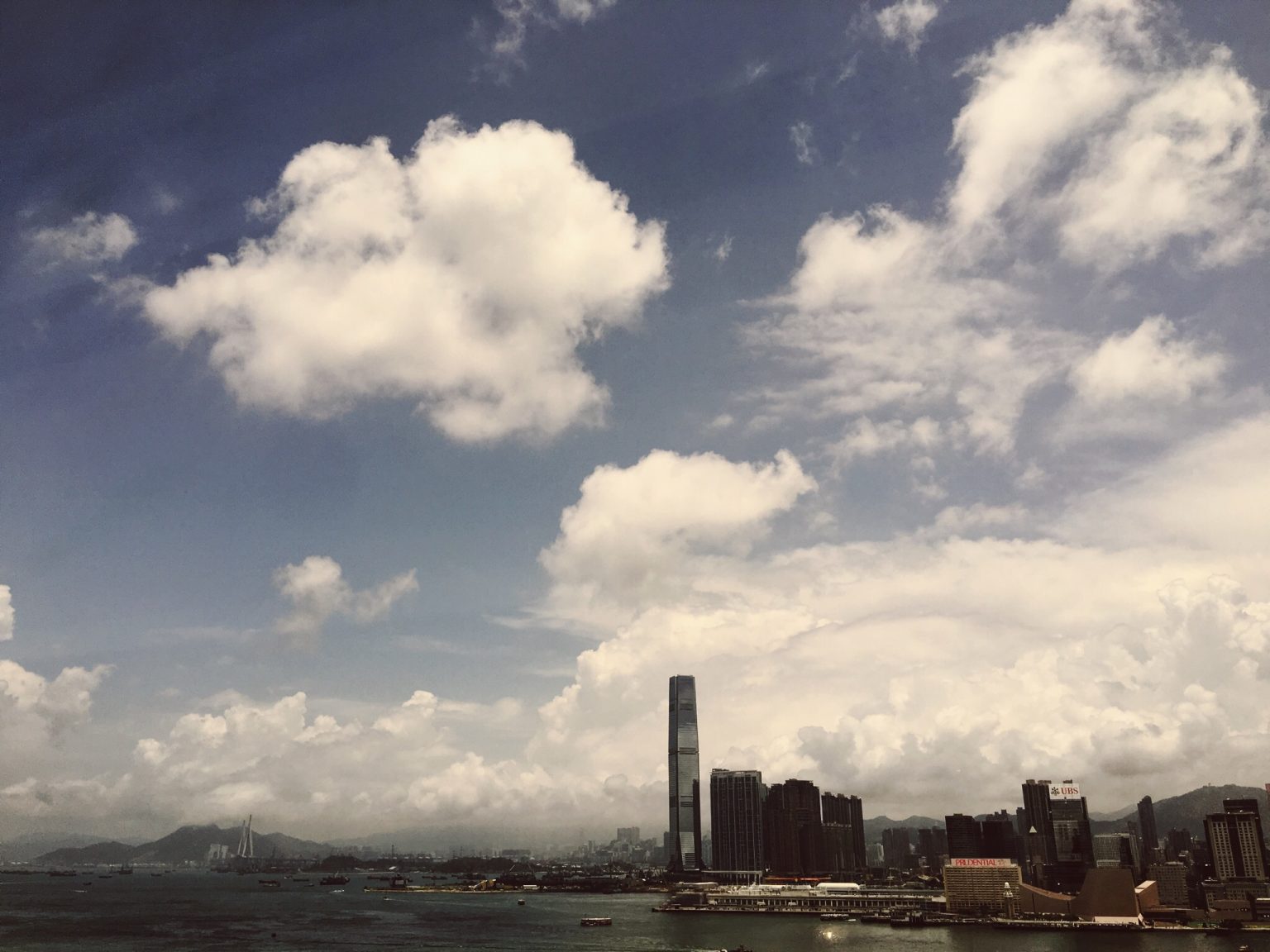
Views back across the harbour onto Kowloon’s ICC by Joel. ICC is, Hong Kong’s tallest building.

A shot taken from an overpass with a view of Hong Kong’s vibrant skyline.

Hong Kong is never short of modern architecture and interior design.
Outside of using VSCO as a tool, what are some references such as books and sites you use?
It kind of depends on the field of study. I’m a big fan of history and learning from people’s mistakes and failures. People look mostly at success. But anytime you find success, there are so many variables, and there are so many things. But when things fail, there’s usually a reason you can point your finger. I look at the things that have failed, and I don’t do those.
What’s been one of your biggest failures and oversights that you’ve been able to learn from?
There’s a lot. But last year, growing too fast. At the end of 2014 to 2015, we grew from 40 to 115 people. It was just too much too fast. Up until that, we hadn’t ever taken any financing. We had used all the money from selling VSCO Film. I don’t know if you guys watch the HBO series Silicon Valley, but I have to bite my tongue the whole time. It’s not even a joke it’s a documentary. Scenes such as going from the house to the new office with the new amenities, there’s that trap. We didn’t realize what our limits were. We grew to the point where the solution was more people or more money.
How do you balance your point-of-view and doing things that are a benefit for the company and others as a whole?
It’s clarity around why you exist, what you’re doing and an alignment around goals. A book for anybody starting a company you should read, Five Dysfunctions of a Team by Patrick Lencioni. I read this book, and it was in a lot of ways us. It was all these people with different opinions. Engineering fighting for what engineering wanted. Marketing wanting what marketing wanted. Everybody was fighting for their own territory instead of fighting for the same team goal. Another one to check out is Simon Sinek. I recommend his Ted Talks instead of his book, “Start with Why.” It’s why all great things are from understanding and solving the ‘why.’ We have a few products that are done right now and could launch. But they don’t fit the core of why we’re doing it.
Do you have any other past experiences outside of VSCO that set you up for success?
Back to learning from mistakes, I had learned at a moonlight for a few years at another start-up. That’s why VSCO is a success. It was a big colossal screw-up. It was there I met Wayne and Mike. The founders of the company basically bankrupted everything and sold the company for assets. They did things legally and financially wrong.
When we started VSCO, we were going to have a legally and financially sound business from day one. I’m going to protect the rights of my employees. I’m going to be over generous from an equity standpoint. There are quite a few links I can share from a legal standpoint, and while there are changes based on region, some of the basic principles exist.
How important is comfort or discomfort to creating the best work?
Not sure how many of you have worked in the tech space in the Bay Area recently, but on the engineering side of things is like ‘what new benefit can be made up to win them over.’ It’s insane. There’s a balance to that. For us, food is very important to us. We have a commercial kitchen downstairs that makes amazing breakfast and lunch. Dinner is not served, and that’s a big difference from other companies. I want people to go home and be with their families. People need to be well-rounded. That’s why we’re in Oakland and not San Francisco. It’s not everybody talking about funding and valuations. [laughs]
We tend to think of things that keep the company together. There are two gyms within a block of the office. So we do a gym membership. When people are healthy and eating well, they have a better attitude. When we used to have soda and junk food with the sugar crashes, it was different. We’re in a beautifully-designed space. That environment exists to inspire creativity. There are areas you can go overboard on. We started in a 120 square-foot office space that I had to rent personally. I still have to change a lot of financial records. I had to vouch for myself. I had to put my house on the line. Very early on, I was a janitor in high school. So I cleaned our old office because it was cheaper than hiring somebody. Some of those things, knowing where you came from and having that grit is key. The core value side of things, the Patrick Lencioni has a booked called “The Advantage.” What it all comes down from a tech and design perspective, there’s somewhat of an even playing field. You can get anybody to recreate tech and design with money. But one thing you cannot recreate is what is called organizational health and how well you work together. One big shift is how we work together and communicate. That being our real competitive advantage. We get things done fast, and we have core values. We talk about in VSCO about how people are trailblazers and want to be bigger than themselves. There’s no ego, and there’s not about your career but what we can accomplish as a group. Figuring out those values from day one and sticking to them is so important.
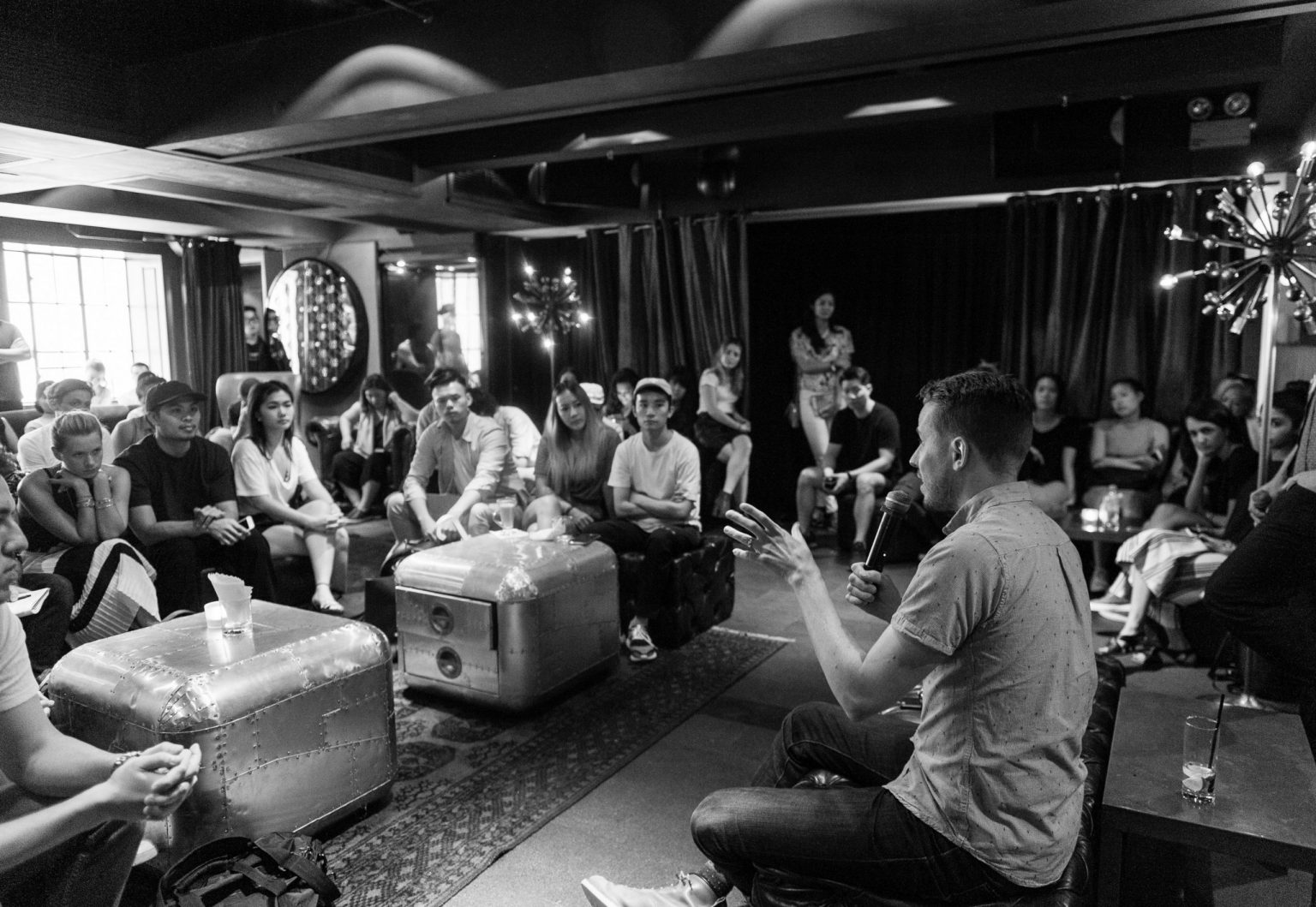
To round off the afternoon, Joel fields questions from the crowd.
Guest Questions
How long do you think about a new feature before you implement it? Like copy and paste of edits?
Things on the app were all thought of from the start. Greg and Wayne dream up all these ideas and then Mike is who we call the “dream-catcher.” He’s very practical from that standpoint. You’re going to start seeing a bunch of new stuff rolling out. A lot of what you see in VSCO has been there for 18 months or so with a few tweaks. But in reality, it’s been thought of and designed over three years in the summer of 2012. The current app is very Frankenstein. We have our own library in the app. People ask ‘why don’t you just use the native camera roll?’ When we first started, Apple wouldn’t allow a third-party app to delete a photo. Well, that’s dumb if I delete it from VSCO, it’s still in my camera app. So we built our own library, and there are some complexities there. There are some benefits, there are some disadvantages.
To put things in perspective, there’s a feature list of 1,500 things that are being prioritized on what would be the biggest impact or story. There’s a lot of stuff. Every two weeks we ship a new version whether you see it or not. We have what we call feature flags. We’ll launch a feature for a certain region and test to see how it does. Not sure if you’ve seen the suggested users feature. We put that into our on-boarding process. We hit growth numbers of hundreds of percent just by launching it for 10 minutes to 20,000 people. It was announced in January; VSCO had well north of 30 million users. When you roll out a feature, you need to make sure that it doesn’t break five other things, and your infrastructure can handle it.
When somebody like Snapseed launches new features, do you need to play catch-up?
I’ve used everything, and we pay attention to those things. But we’ve never been about this is what they do, we need to map that and do it. We’ve had our perspective from day one. In some ways it’s good, other ways it’s not. We’ll listen to the community. If we feel there are things that are important, we’ll consider them. If anybody here wants to be a Beta tester, we have an active beta group on iOS and Android.
It sounds like you have an amazing team. What do you do when people want to set off and do their own thing?
Usually extremely supportive. When you take a look at it from a legacy standpoint, people refer to the PayPal Mafia and how so many great companies have come from this initial group. It’s something very important for me. I want people to leave VSCO having learned a lot. Really at VSCO right now, we’re just in act one. Everything has been setting the stage and hiring the cast and designing the set. The play is just starting. There’s a level of excitement there. We’ve had less than 5% attrition. One of our Heads of Social, Emily Bibb, landed a great job that was her dream in fashion. How could we help her get that? VSCO is obviously not fashion, and she got everything she dreamed off. So we’re always wanting to ensure that we can help and continue talking to people about their career development.
What do you do if somebody at VSCO no longer feels like a good fit?
The good fit side of things comes down to three things. One is either they’re being mismanaged. Certain people don’t know what the right fit is. That hasn’t been clearly communicated.
First and foremost, I’d look at their manager and make sure they’re imparting the right vision and why, and the employee knows the expectations. The one thing we want to know is what is expected and how will I know if it’s successful. If a manager cannot provide that, then the blame is on the manager and ultimately me.
The second is that they cannot do it. They technically cannot do it. It’s more of a training and mentoring standpoint.
The third point is they know what they should do, and they fundamentally don’t do it. At that point, the conversation is very easy and clear. If you’ve mitigated the other two, then you know it’s a personal choice, and it’s more of an amicable split rather than coming out of left field. I say that with the experience of doing it the wrong way before. [laughs]
When I was explaining this talk to some people at work about VSCO, I mentioned a lot of it is discovered through the hashtag. Is that close connection to Instagram beneficial? Detrimental?
It’s not detrimental. It’s our evolution. Before there wasn’t a platform to share to. There are over 148 million #vscocam hashtags. #vsco is at 108 million and Nike is number three at 47 million for brands. It’s very prolific and does a lot. When we met with Kevin there, he wanted to build something for broadcast. There’s a different reason for why they exist with the ads and feature requests. That’s so much more. We continue to speak about what we do rather than comparison to others. It’s flattering. We have more people editing photos than Adobe does. Over 85% of Instagram content is created elsewhere. It’s a very passive community, and the volume that people are sharing is down from what it used to be down.
With a start-up, you have lots of highs and lows. When you’re at these lows, what do you keep from a leadership standpoint to keep people motivated?
In large part what I take on, that’s my largest responsibility. When I break down what I do as a CEO, the overwhelming majority is about the organizational health and leadership. We work with coaches, books we read, internal training programs. As a leader, your job is to go in and put on a face even if you’re having a shitty day. There’s also a level of transparency and honesty. You can’t always fake it, but there’s a level of honesty without letting it get you down. That’s what most people say are the Achilles heel. For companies that fail, nine times out of 10, it becomes of internal strife. There are those that don’t get to a product market fit. But those who had it, the failure came down to communication including core values and disagreements. Five Dysfunctions of a Team is a book I recommend again. I was at a leadership convention, and there was a roundtable panel of 25 CEOs. Of the 25, 20 of them said they had a leadership that was in shambles. There were five that said they were dialed in. That’s where I found out that they had all gone through this Five Dysfunctions of the Team. It was the common denominator.
This interview has been edited for clarity and conciseness.



























